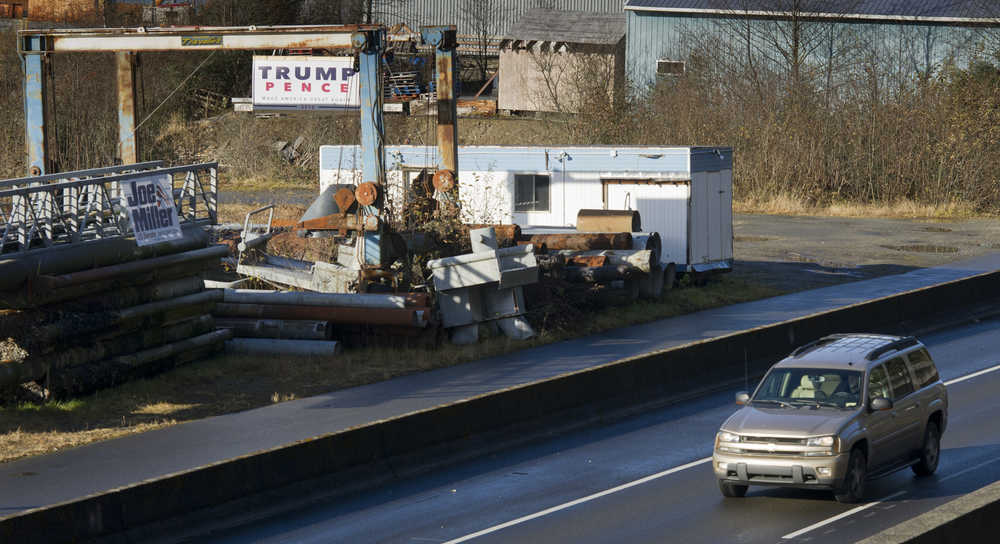Nearly every political sign in Juneau is illegal — and that’s OK.
According to state law, “outdoor advertising may not be erected or maintained within 660 feet of the nearest edge of the right of way.”
That 660-foot buffer applies to all state roads, including Glacier Highway, Egan Drive, Thane Road and Douglas Highway.
There’s an exemption for real estate signs, but there’s no exception for political signs — even on private property.
Jeremy Woodrow is a spokesman for the Alaska Department of Transportation and Public Facilities in Juneau.
“Most people bring this up during political sign season,” he said, and he’s heard plenty about it this year.
Last week, the Empire ran a story about the defacement of signs supporting Republican presidential candidate Donald Trump. After the story published online, Juneau resident Tom Rutecki urged readers to report unlawful signs by calling DOT.
The transportation agency, not state troopers or law enforcement, has the authority to enforce the sign law. It has the authority, Woodrow said, but not the resources. DOT doesn’t have an enforcement division, which means that if a sign needs to be taken down, someone has to be pulled away from patching potholes or trimming brush.
“We aren’t an enforcement agency. We don’t get extra funding to do enforcement on this,” Woodrow said. “If you were an employee, this is ‘other duties as assigned.’”
Alaska has long prohibited billboards as harmful to “Alaska’s uniqueness and scenic beauty,” according to a 1998 ballot measure approved by 72.38 percent of voters.
According to DOT’s own history of the billboard ban, the Alaska Territorial Legislature first addressed the topic in 1949 but specifically exempted political advertising from the ban.
Later prohibitions under statehood did not exempt political signs, and the modern law continues that tradition.
Enforcement is the issue, Woodrow said. DOT typically only removes signs if they pose safety hazards.
“If someone tapes a sign to a stop sign, that’s going to be ripped down immediately,” Woodrow said.
The same is true for signs attached to guardrails, highway signs or the like. Woodrow said the chief offenders are signs placed in Juneau’s roundabouts.
While DOT is allowed to remove a troublesome sign immediately if it’s on residential property, the situation is different if the sign is on commercial property. In that case, DOT has to give 30 days’ written notice before removing a sign.
Given that most political signs go up less than 30 days before an election, there’s not much DOT can do with a sign on commercial property, Woodrow said.
“What’s the point of issuing a 30-day written notice? Even then, they could take it down, put it back up and start the cycle again,” he said.
Despite those limitations, Woodrow said DOT has received some requests for takedowns, and it has indeed removed some signs.
“We have been out there; we have removed a few,” he said.
Asked for figures — even ballpark ones — Woodrow said fewer than 5 percent of requests have resulted in a takedown.
• Contact reporter James Brooks at 523-2258 or james.k.brooks@juneauempire.com.

